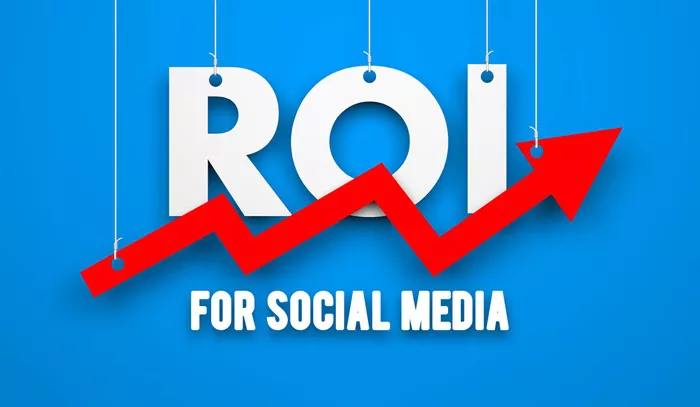Social media advertising, once a dominant force in digital marketing, is facing a critical turning point. Despite record-setting investments and rising global ad spend—projected to reach $239 billion in 2025 and $273 billion by 2026—a growing number of marketers are reporting that the returns on these investments are falling short of expectations.
According to a new study conducted by content discovery platform Taboola in collaboration with experience management firm Qualtrics, nearly 75% of performance marketers say they are experiencing declining returns on their social media ad spend. The findings, based on a survey of more than 300 brand and agency advertisers across the U.S., highlight a concerning trend that’s prompting many in the industry to reconsider their approach.
Mounting Challenges Undermine Social Media Performance
The decline in return on investment (ROI) can be attributed to several compounding factors. Chief among them is audience saturation. As brands increasingly compete for limited user attention on platforms like Facebook, Instagram, TikTok, and LinkedIn, users are becoming desensitized to advertisements. This phenomenon—commonly known as “ad fatigue”—has led to declining engagement rates and waning effectiveness.
Rising advertising costs are also squeezing budgets. With more companies vying for visibility, bidding wars have intensified, pushing up the price of impressions, clicks, and conversions. More than 30% of marketers surveyed indicated that the diminishing returns are having a noticeable impact on their budgets. The days when greater spending reliably delivered better performance appear to be over.
“Social media takes up a huge portion of performance ad budgets, but marketers are hitting a wall,” said Adam Singolda, CEO of Taboola. “Spending more does not necessarily yield better results.”
Marketers Turn to New Strategies Amid Performance Decline
The research shows that in light of these challenges, more than 80% of performance marketers are actively testing new approaches to offset falling returns. Many are diversifying their digital ad strategies to include other formats such as native advertising, programmatic display, and search ads.
Native ads, which appear as part of a website’s editorial content, are gaining traction for their non-disruptive nature and ability to blend seamlessly with user experiences. Meanwhile, search advertising continues to offer intent-driven targeting, reaching consumers as they actively seek information or products.
This shift marks a significant evolution for marketers who have long relied on the reach and influence of social platforms. As the digital ecosystem matures, industry professionals are increasingly seeking more sustainable, high-performance alternatives.
Strategic Diversification Becomes Imperative
The movement away from social media dominance is not merely tactical—it represents a broader strategic pivot. Marketers are now building cross-channel campaigns that incorporate a blend of social, search, display, email, and content marketing to create a more robust presence.
This diversified approach allows brands to spread risk and respond more nimbly to disruptions in any one channel. Given the volatility introduced by algorithm changes, privacy regulations, and evolving consumer behavior on social media platforms, reliance on a single platform is increasingly seen as a liability.
Instead, brands are pursuing flexible strategies that allow them to adapt quickly and reach audiences across multiple digital touchpoints. This agility is crucial in a competitive landscape where consumer expectations are rising and attention spans are shrinking.
Data and Technology Drive Smarter Decisions
The transition is also being guided by data-driven decision-making. With real-time analytics tools at their disposal, marketers can better measure performance, optimize campaigns, and reallocate budgets toward channels delivering the highest returns.
Artificial intelligence and machine learning are playing a larger role in this shift, enabling predictive targeting, personalized messaging, and more efficient media buying. These technologies reduce the reliance on guesswork and trial-and-error approaches, offering greater precision and control over marketing outcomes.
As Singolda noted, the focus is moving away from simply increasing spend to making that spend more intelligent.
Organic Engagement Regains Importance
While paid advertising has long been the primary engine for growth, marketers are also reviving interest in organic strategies. Content marketing, influencer partnerships, and community building efforts are seeing renewed emphasis as ways to foster trust and long-term engagement.
Organic methods, while slower to yield results, offer the advantage of building brand equity and customer loyalty without direct ad costs. Blog posts, videos, and other content formats serve dual purposes—educating audiences and reinforcing brand authority.
Similarly, influencers who engage authentically with their followers can extend a brand’s reach into niche communities, offering high credibility in the process. These complementary efforts are helping marketers rebalance their strategies and reduce dependency on paid social alone.
A Changing Landscape Demands Adaptation
The message from the Taboola-Qualtrics study is clear: marketers must evolve their strategies to remain effective. The era of guaranteed growth through increased social ad budgets is over. In its place is a more fragmented, complex environment that requires smarter investments and broader thinking.
Consumers today are more discerning and skeptical than ever before. They seek relevant, valuable, and authentic content across multiple channels. Marketers who understand this shift and adjust accordingly will be best positioned to build lasting relationships and drive meaningful results.
Conclusion
Social media remains a vital component of the marketing mix, particularly for brand awareness and engagement. However, its role as the primary engine for performance marketing is being reevaluated. It is no longer a one-size-fits-all solution.
Going forward, success will depend on integrated campaigns that leverage the strengths of each channel, supported by real-time insights and adaptive strategies. For marketers, this means moving beyond old habits and embracing a more dynamic, data-informed approach.
The future belongs to those who can innovate, diversify, and connect with audiences in a meaningful way—regardless of the platform.
Related Topics
- What Does Reach Rate Mean in Social Media Marketing?
- Five Essential Books and Resources for Social Media Professionals
- Digital Marketing and Children’s Rights: UNICEF’s Call

